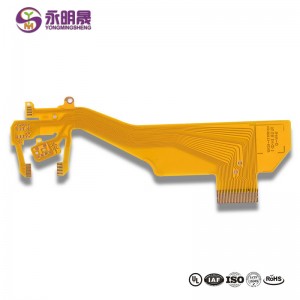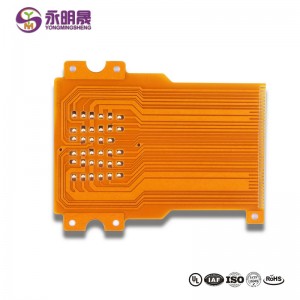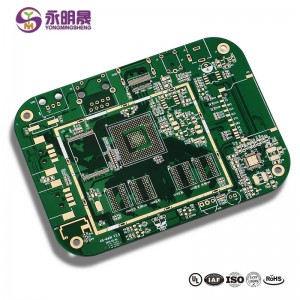Flexible Print Circuit 2Layer | YMSPCB
What is a flex PCB stiffener?
The purpose of the stiffener is to strengthen the mechanical strength of FPC (flexible circuit board) on account of facilitating the mounting of components on the PCB surface, etc.
The types of stiffener used in the flexible circuit board are various, which mainly depends on the requirements of the product, such as PET, PI, adhesive, metal or resin stiffener, etc.
Flexible printed circuits, also known as flex circuits, are sometimes regarded as a printed circuit board (PCB) that can bend, when in reality there are significant differences between PCB’s and flex circuits when it comes to design, fabrication and functionality. One common mistake that designers make is to design a flexible circuit using the same rules as a PCB.
The Differences of Flexible Printed Circuits and Standard Printed Circuits Board
There are several differences between Flexible Printed Circuits and Standard Printed Circuits Board. It's important to point out that though both of them have a similar electrical function, they have notable structural and mechanicals variations. The first difference between the two is that a Flexible Printed Circuit has the ability to bend and twist while the Printed Circuit Board cannot. This particular difference deems it necessary for the two to have different manufacturing materials, processes, and designs. From the above assertion, let's look at the different materials that Flexible Printed Circuits and the standard Printed Circuits Board use in their applications.
For the base layer, it has to be rigid and usually reinforced by glass for a printed circuit board. In this case, the most common material used to make it is FR4. The material used provides the much-needed stability, contains thermal resistance, and has excellent mechanical force. However, it doesn't have the capacity to bend. On the other hand, for the flexible circuit, the base materials used are mostly made of polyimide. The advantage of using this material is that it has excellent flexibility abilities, but it is limited on its capacity to provide mechanical support. Additionally, its dimensional stability is limited.
In respect to adhesives, the requirements for printed circuit boards are majorly inclined towards thermal and chemical qualities. The main reason behind this is that they don't flex. This is not the same for a flexible printed circuit. Since it has to bend, the adhesive used has to allow bending for the application to work effectively. There has to be some considerable amount of stretching for an adhesive that's meant for a flexible circuit. The bottom-line here is that an adhesive that's fit for a flexible printed circuit contains different thermal, mechanical, and chemical qualities from that of a printed circuit board.
Lastly, we'll look at the copper film. Essentially, there are two kinds of copper film. The first one is the Electro Deposited and the other one is the Rolled Annealed. Between the two, Rolled Annealed has more flexible qualities and, thus it's the best option for a flexible printed circuit application. On the other hand, though Electro Deposited copper has a bit of flexibility, it is majorly used for the production of printed circuit boards. The choice of copper carries a great deal of significance for the performance of a flexible circuit.
It is quite obvious, based on the above differences, that the design specifications for a flexible printed circuit and a printed circuit board have significant variations. For this reason, it's imperative for designers and engineers to be aware of the differences between the two so as to avoid failures.
You May Like:
1、What is FPC flexible circuit board, what is PCB rigid circuit board?
2、Folding screen and 5G become the innovation direction of FPC communication products
3、A paper about FPC flexible circuit board
Video
Learn more about YMS products

1. What is flex circuit used for?
They can be used for static applications and dynamic flexing. For the case of static applications, the design of the circuit board is for minimal flexing. It is during the installation that the circuit is flexed. For dynamic flexing, the circuit boards are for regular flexing. Here are a number of the applications of these circuit boards: robots, printers, and cell phones. It is also essential to point out that flexible circuit boards are largely used in applications that require high precision and regular flexing. Examples of these applications include: cameras, satellites, fuel pumps, antilock brakes, avionics, motion systems, medical devices.
2. What is flex circuit design?
Any circuit, including a patterned arrangement of wiring printed in a flexible board or substrate with our without flexible cover layers, may be categorized as a flex-circuit.
However, additional design features, for instance, a dimensional configuration or a particular dielectric material, may often be as significant as the flexibility rating in determining the effectiveness of a flexible circuit for a certain application.
3. Why is a PCB flexible?
Step 1: Get Copper-coated Film.
Step 2: Use a Solid-ink Printer
Step 3: Print on Pyralux
Step 4: Etch It
Step 5: Populate the Board










